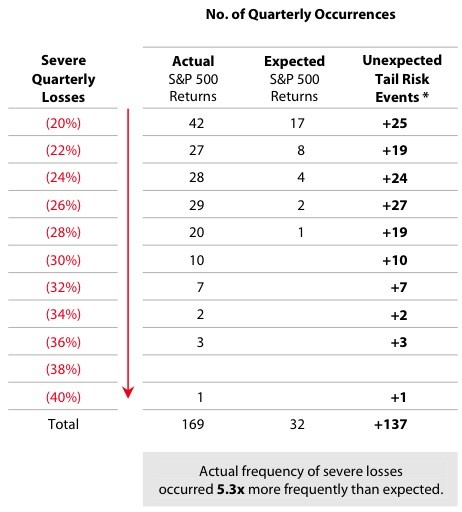Predicting Returns using Monte Carlo Simulation
Post on: 16 Март, 2015 No Comment

Predicting Returns using Monte Carlo Simulation
One method that can be used to predict returns is Monte Carlo simulation. Monte Carlo simulation is a method of generating thousands of series representing potential outcomes of possible returns, drawdowns. Sharpe ratios. standard deviations and other investments statistics of a specific investment or portfolio. The simulation calculates the uncertainty of a portfolio’s returns given its range of potential returns. Software that uses this simulation method can assess the probability of an individual achieving a retirement objective (and/or other financial objectives), given an investment portfolio’s specific asset allocation. Monte Carlo simulation using a bootstrapping technique allows for both skewness and kurtosis to be preserved. The bootstrapping technique involves resampling the actual data rather than assuming a normal distribution like standard deviation does.
Monte Carlo simulations randomly construct a distribution of many possible returns for a portfolio over a specified time horizon. Thousands of possible results are calculated, and a probability profile is constructed for the various statistics.
To see how this works, we can look at the stock market crash of 1987. From the period of January 1975 to August 1987, the largest drawdown for the S&P 500 Index was -16.52%, and the average return was 19.45%. Based on these numbers, few investors would have anticipated the crash of October 1987. However, using Monte Carlo simulation, we can see that there was the possibility of a market crash even in August 1987. Figure 7 shows the results of 10,000 Monte Carlo simulations on the S&P 500 Index. Note that the 99th percentile indicates a possibility of a 28.83% drawdown. This percentile indicates that, however remote, there is the possibility of a significant drawdown, one which historical returns and standard deviations do not predict.
Figure 8 shows the results of a Monte Carlo simulation that was run as of 6/30/2011. Each bar represents the range of worst potential returns which have a 10% probability of occurring. As can be seen in the chart, from 1975 to 2001 the S&P 500 Index never had a 3 year to 10 year period that fell within the range. However, as of June 2011, the S&P 500 Index had experienced its worst performance in over a 25 year history. This example indicates that although there may be a discrete probability that an event might occur, it does not specify exactly at which time it will occur.














